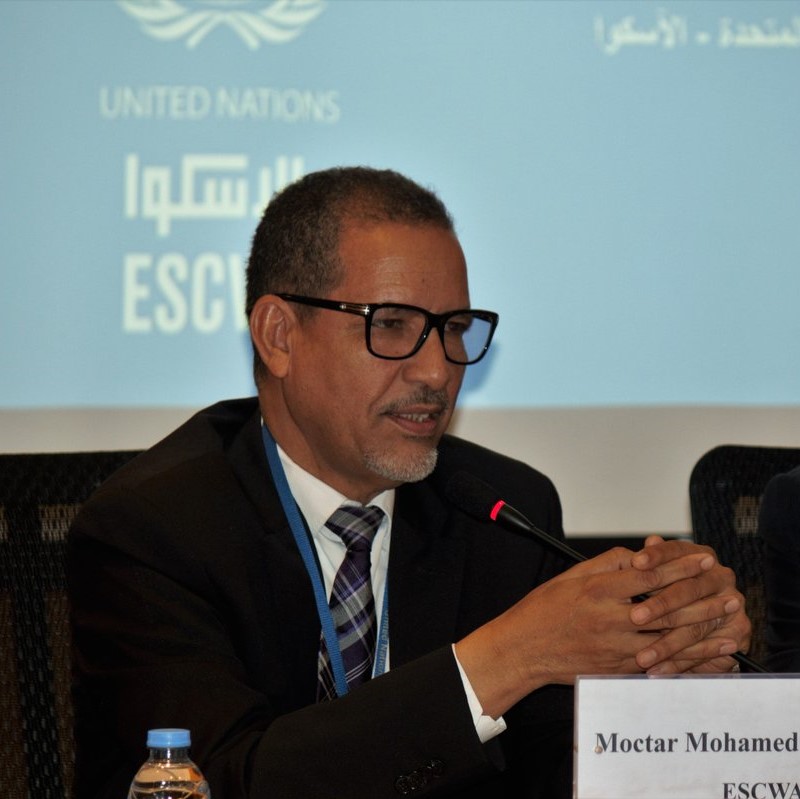
Mohamed EL Moctar Mohamed EL Hacene, UNRSF Steering Committee Chair | Director of Economic Development and Integration Division, UNESCWA
With more than 1.3 million deaths worldwide each year and nearly 50 million serious injuries, traffic crashes are one of the most important problems facing the contemporary world. It is the leading cause of death for young people between the ages of 15 and 29.
Only seven percent of traffic fatalities are in high-income countries, which are experiencing a steady improvement in their handling of the traffic safety problem. Ninety-three percent of these deaths occur in middle- and low-income countries, most of which suffer from the worsening of this problem with the drain in their productive human resources, and the economic losses estimated at two to five percent of GDP in these countries.
In ESCWA region, WHO estimates that there have been more than 65,000 deaths from traffic crashes in 17 Arab countries whose data for 2016 are available, which accounts for more than 19 deaths per 100,000 inhabitants, nearly four times the rate in the European region, estimated at 5 deaths per 100,000 inhabitants.
Even more, the total number of deaths witnessed an increase of 6 % between 2013 and 2016 in the countries where data enabled such comparison.
These regional evidences, to be cross-checked with other global ones, illustrate the ample and alarming trend in lack of road safety in the low- and middle-income countries that are challenging the objectives of the UN Decade of Action for Road Safety 2011-2020 and the road safety related SDGs, namely SDGs 3.6 and 11.2.
The experiences of developed countries that have achieved a significant improvement in traffic safety have shown that the problem of traffic crashes and their negative consequences is not necessarily inevitable, and that the problem can be addressed and countered by a package of integrated actions, based on comprehensive and sustainable voluntary policies, implemented through homogeneous action plans, which in turn are part of long-term strategies, planned, implemented, monitored and evaluated in collaboration with elements of a comprehensive traffic safety management system, which integrates all relevant government, private sector and non-profit organizations, and is based primarily on the existence of a specialized national body tasked with leading and coordinating efforts to improve traffic safety between all these parties and entities.
These regional evidences, to be cross-checked with other global ones, illustrate the ample and alarming trend in lack of road safety in the low- and middle-income countries that are challenging the objectives of the UN Decade of Action for Road Safety 2011-2020 and the road safety related SDGs, namely SDGs 3.6 and 11.2.
The experiences of developed countries that have achieved a significant improvement in traffic safety have shown that the problem of traffic crashes and their negative consequences is not necessarily inevitable, and that the problem can be addressed and countered by a package of integrated actions, based on comprehensive and sustainable voluntary policies, implemented through homogeneous action plans, which in turn are part of long-term strategies, planned, implemented, monitored and evaluated in collaboration with elements of a comprehensive traffic safety management system, which integrates all relevant government, private sector and non-profit organizations, and is based primarily on the existence of a specialized national body tasked with leading and coordinating efforts to improve traffic safety between all these parties and entities.
The time is pressing to achieve immediate and tangible results; which calls upon intensified cooperation efforts to find innovative and sustainable solutions that, we hope, would be catalyzed through the UN Road Safety Fund.
I would like to express here the strong commitment of the Chair of the Steering Committee work with all of you as one team to capture those innovative and sustainable solutions, and our engagement to follow up to ensure their appropriate implementation.
I would like to express here the strong commitment of the Chair of the Steering Committee work with all of you as one team to capture those innovative and sustainable solutions, and our engagement to follow up to ensure their appropriate implementation.